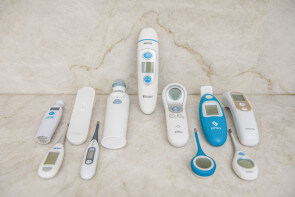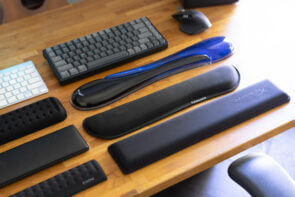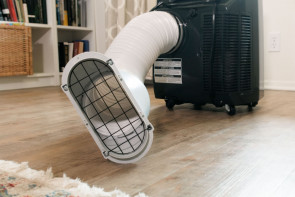
Tesla Camping in a Model Y: Accessories & Planning
We’ve done a lot of car camping in Southern California so are relatively well-versed in normal camping gear and setup but we’ve never actually slept in a car for camping. We went into it with a few new unknowns and did our best to plan for them knowing we’d sleep in a Tesla – Model Y Long Range 5-seater. We did a camping trip 50 miles away from home with about 15 people in the camping party total. The trip was a success, but there are a few tradeoffs compared to sleeping in tents. Here’s how it went down.
We’ve done a lot of car camping in Southern California so are relatively well-versed in normal camping gear and setup but we’ve never actually slept in a car for camping. We went into it with a few new unknowns and did our best to plan for them knowing we’d sleep in a Tesla – Model Y Long Range 5-seater. We did a camping trip 50 miles away from home with about 15 people in the camping party total. The trip was a success, but there are a few tradeoffs compared to sleeping in tents. Here’s how it went down.
Table of contents
- Range & battery life calculations
- Charging the battery
- Cargo space
- Tesla camping accessories
- Camp mode, sleeping & bathroom breaks
- Final thoughts
Range & battery life calculations
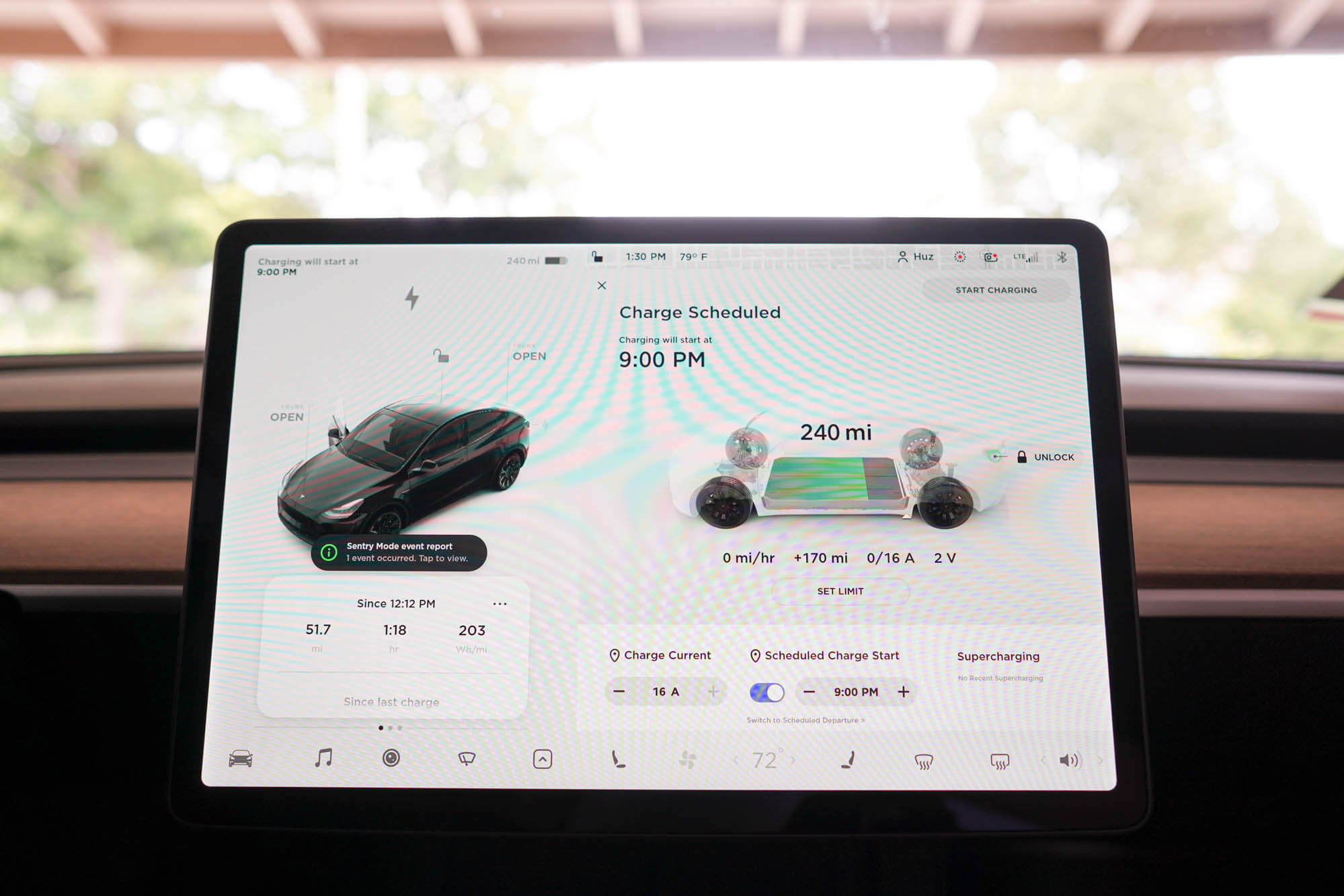
With regular internal combustion engine cars, we never really think twice about range since there are gas stations everywhere. But with an electric car, even though charging stations are growing at an impressive rate, they are still sparse enough that you need to look up where chargers are going to be on the way to your destination.
Total range: 327 miles. The max charge our Long Range Model Y can hold is 327 miles of range. This figure is what Tesla uses based on EPA findings and we’re unsure if it adjusts for loss of capacity on older batteries.
Actual battery range used per mile driven: 1.5. In other words, 50 miles driven would use “75 miles of range” according to the Tesla app. 1-2 weeks before the trip we were keeping track of the power we used in kWh. We averaged around 280 kWh/mile with typical fan, AC usage, and mixed city & highway driving.
Camp mode battery usage: 1% per hour of running this mode. We watched some other videos and read articles of others using this. Of course extreme temperatures will use more, so we erred on the side of caution and went with a high estimate of the car using 1% of charge (3.14 miles) per hour that camp mode is on. So about 25.12 miles for 8 hours of sleep.
Campsite distance: 50 miles from home. Driving there would use 75 miles of range, and same on the return trip.
Final tally: 75 miles of range to reach the campsite, 50.24 miles of range used to sleep two nights, 75 miles of range to get back home = 200.24 range miles total.
This gave us a buffer of about 114 miles left over in case we used more than anticipated for any reason like steep mountain drives, extra cabin cooling for overheat protection in hot weather, keeping food cool, or extreme temps at night.
Charging the car
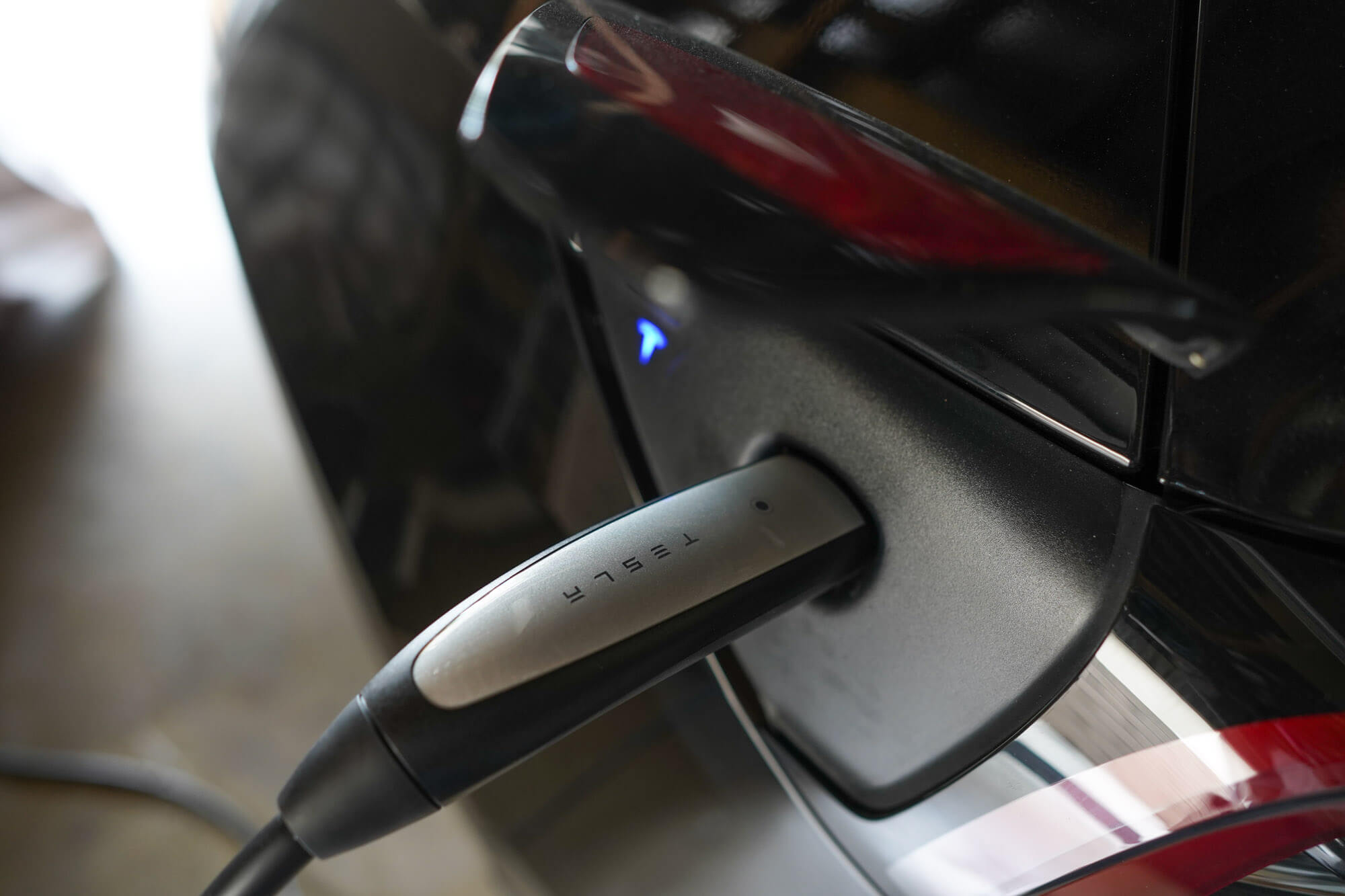
We’ll need to do some planning here regarding how often we need to charge. We need enough power to drive to the campsite, run camp mode (which we learned uses 1% of charge per hour), so factor in how many days you’ll be tehre, and enough power to drive home.
First charge at home. We set the battery to charge up to ~95% capacity, around 314 miles, since it’s better for the battery and regenerative braking works out of the gate. Charging to 100% shuts off regenerative braking, so the total range ends up being the same, but puts more strain on the battery.
Charge before arriving to the campsite. Let’s say you’re staying at the campsite for three days, and using camp mode each night. You should factor at least eight hours of camp mode each night (24 hours total) including some power for overheat protection during the day. So if the car estimates you’ll arrive at the campsite with under 24% of charge, you should find a charging station before arriving at the campsite. There was a Supercharger station about 11 miles before reaching the campsite in case we wanted to top off before reaching camp, or if we needed to leave mid-camp to charge. So given our 114 miles of charge buffer range we didn’t stop to charge the battery before reaching the campsite.
Charging at the campsite. Some campsites you can book have charging outlets for RV hookups. However these may be low wattage so unless you’re camped out for a while, it’s probably not a good idea to rely on this for anything other than topping off for camp mode.
I also want to be ready for emergencies, in case we need to leave unexpectedly. Ideally there’s enough charge to make it all the way home when we arrive. This means not arriving with barely enough power to last camp mode, even if we’re able to get a trickle charge in at the campsite.
Cargo space

We had two people sitting in the front and packed the rest to the brim. We filled in the sub trunk, front trunk, leg area in the back seat, folded the larger backset forward and loaded up. The Tesla Model Y is rated with a max cargo space of 68 cu. ft. Here’s everything we managed to cram into the 5-seater Model Y in order of largest to smallest.
- 13′ x 13′ canopy for shade
- 1 twin size folding foam mattress
- Solo Stove – Bonfire camping stove
- 54 qt Coleman cooler from our cooler review
- 47″ x 28″ x 28″ folding camping table (Mountain Summit Gear)
- normal queen sized pillows (not compact camping ones)
- 2 seventy-two quart plastic bins for food and cooking & cleaning supplies
- 1 Coleman – Triton two-burner stove and fuel cans: propane, isopropane mix, butane
- 1 large Osprey backpacking pack
- 1 Incase – ICON backpack from our college backpacks review
- 1 gym bag from our gym bag review
- full size tripod & mirrorless camera
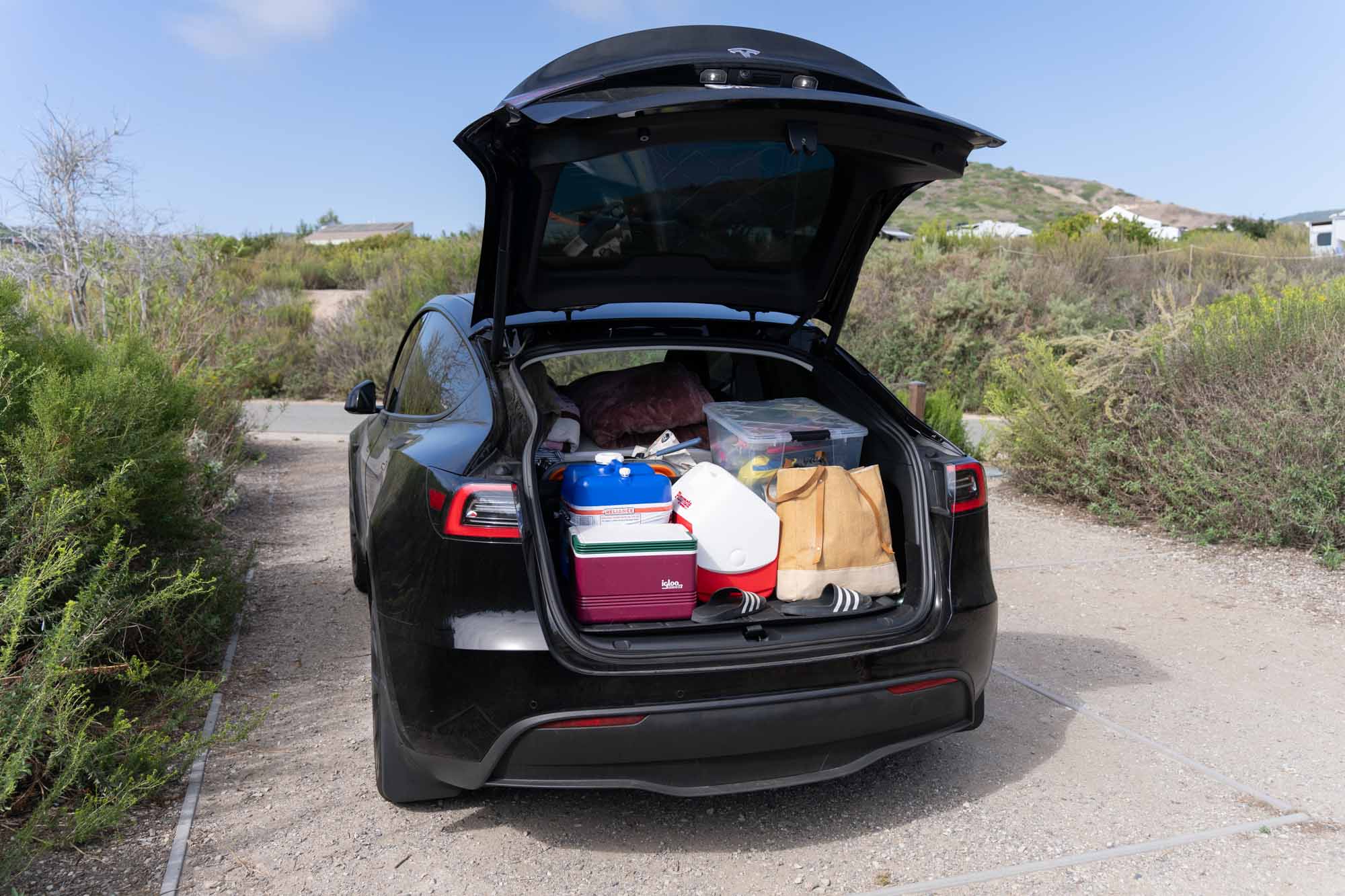
And above is another example of what we packed in for a different camping trip:
- 13′ x 13′ canopy for shade
- 1 twin size folding foam mattress
- 3 normal queen sized pillows (not compact camping ones)
- 1 queen sized blanket
- 2 seventy-two quart plastic bins for food and cooking & cleaning supplies
- 1 Coleman – Triton two-burner stove and fuel cans: propane, isopropane mix, butane
- 1 7-gallon Reliance Aqua-Tainer
- 1 mediun sized cooler
- 1 small Igloo cooler
- 1 tote bag
Tesla camping accessories
For a more thorough guide of all Tesla accessories for the Model Y and 3 see our other post here. However, for any camping trip’s good night sleep you need to stay dry, stay warm, and not break your back during sleeping.
1. Twin-sized mattress. There are some sites that sell Tesla gear and offer a mattress that fits in the back of the Model Y. Some are actual custom solutions for a perfect fit, but many as we’ve found out, are simply taking a product that already exists and rebranding it as their own! We found out one of those are using a certain brand of foam mattress, which we tracked down to be the Milliard – Tri Folding Mattress, available at a much lower price at other retailers.
We typically use a super compact blow up sleeping pad but since we had more cargo space, we went for a thick folding memory foam mattress. This is a huge comfort upgrade because we’re side sleepers and the REI blowup pad starts to get uncomfortable when side-sleeping quickly. We used a normal twin-sized bedsheet to cover it and it fit perfectly. We also used two queen-sized pillows from home for comfort and it fit perfectly.
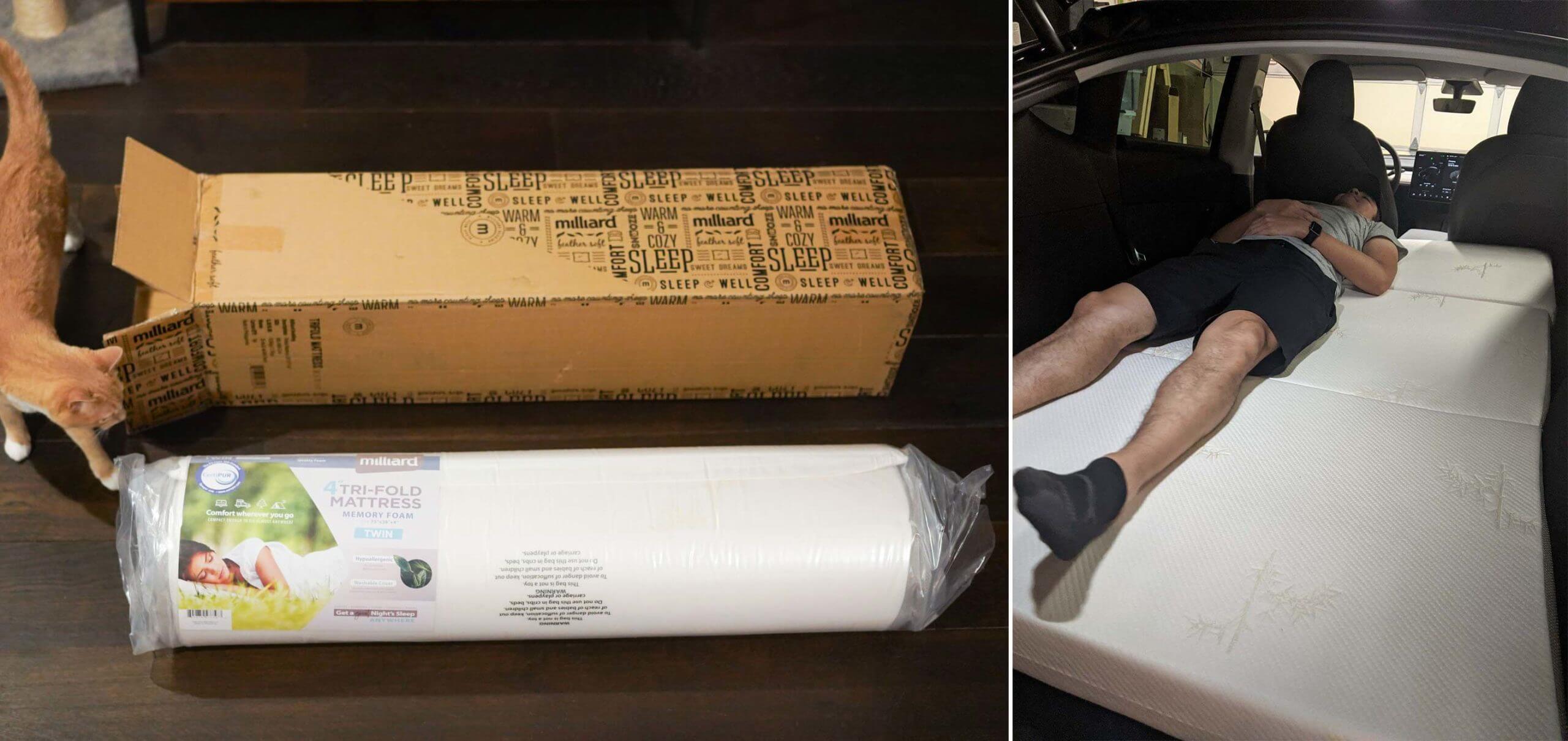
2. Windshield sun shade. Necessary for keeping the un-tinted windshield from scorching the seats and damaging the dash. This sunshade (we got one from BASENOR) is a standard accessory for every day short trips around town but helpful for sleeping in the car too. This is the type that has black on one side, and a more reflective silver on the other, and you can awkwardly maneuver a fold-up when not in use. It’s not as insulating as the thick, foamy, folding type, but its much more compact.
3. Window privacy shades. This provides privacy and blocks out light. We bought these camping side window shades from TGBROS since BASENOR was out of stock. We were camping with around 15 people, with the bonfire right next to our car so we wanted privacy if we went to bed while anyone was still awake. No companies seem to keep this item in stock for very long, perhaps because it’s a niche product. But we got lucky and snagged one before it went out of stock shortly after. The side shades just kinda snap into place and stay with wire tension similar to a typical windshield shade. The back shade however was sized too small so there was no tension on the shade frame and the window frame, we had to supplement with duct tape to hold it in place.

4. Roof privacy shade. If you thought installing the windshield shade was awkward, meet the roof’s privacy shade. This one is version 2 of the Tesmanian roof shade, which I believe the only difference from version 1 is including two self-adhering magnets to keep the shade from sagging in the middle. This thing is huge, so you need to have it folded as it enters the car, or unfold it in the car then hope you have it in the right orientation since the roof is not the same in the front as the back. It has 8 clips to slide into the gray frame of the car which can easily fall out during positioning.
Due to the size of this shade, I’m certain other brands will have the same pitfalls. But this, paired with an optional fully opaque 2nd layer to block out light over the mesh fabric, does the job to cut down or block all the light on the roof for camp nights.
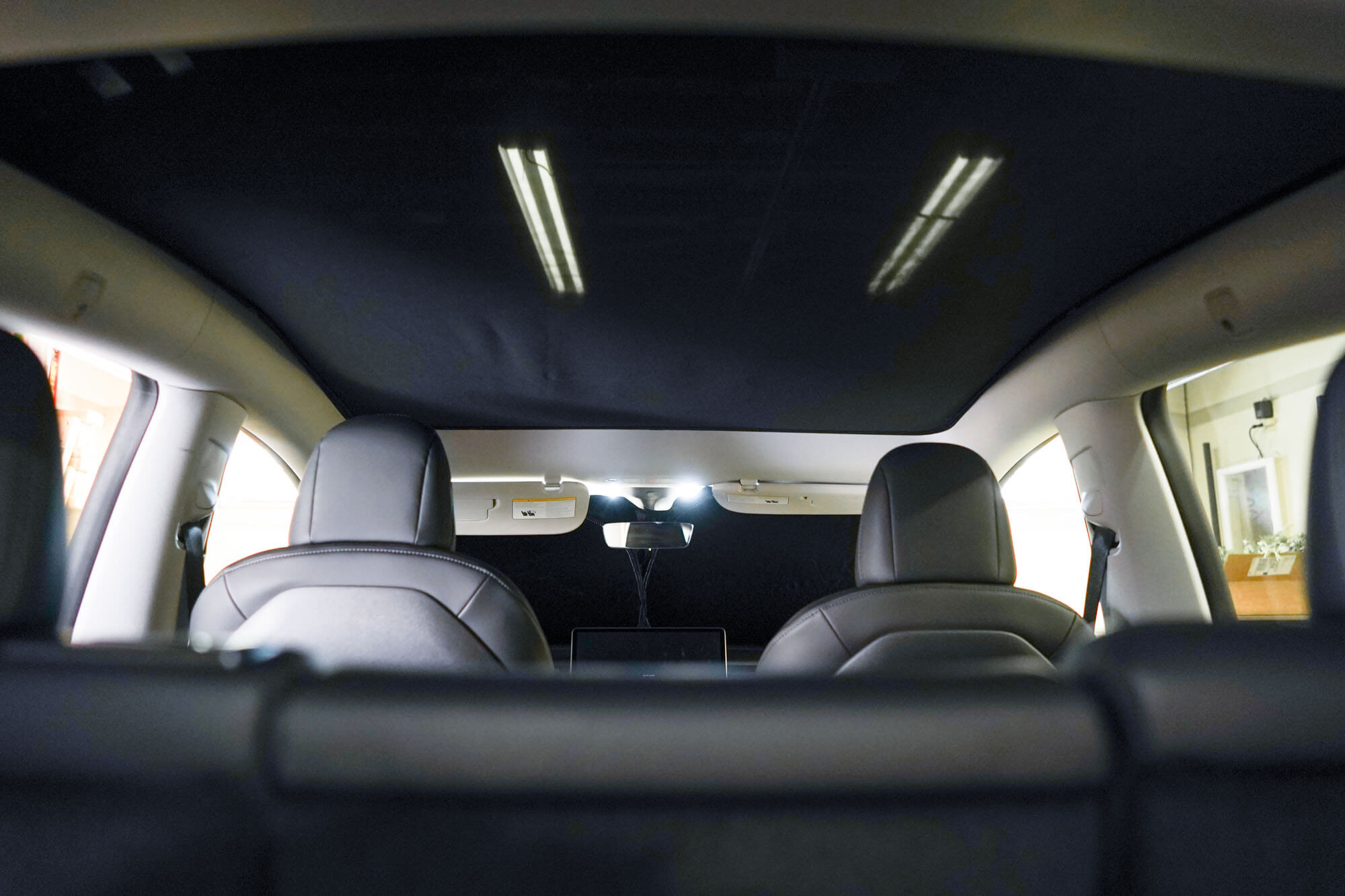
5. All-weather floor mats. It’s camping so naturally we’re going to drag a lot of dirt and rocks back to the car. We were camping next to a beach so for sure there was going to be moisture, sand and then some that we didn’t want to deal with on carpet mats. Out with the carpet, forever in with these all-weather mats.
The two most popular brands for all-weather floor mats are 3D MAXpider and Tesmanian. I don’t love the huge logo the 3Ds have and have only seen the Tesmanians in photos and videos but it looks flimsy or cheap the way the finish of the material is so I skipped both. I found a set of mats from Taptes that looked exactly like the texture of the 3Ds but without the huge brand logos.
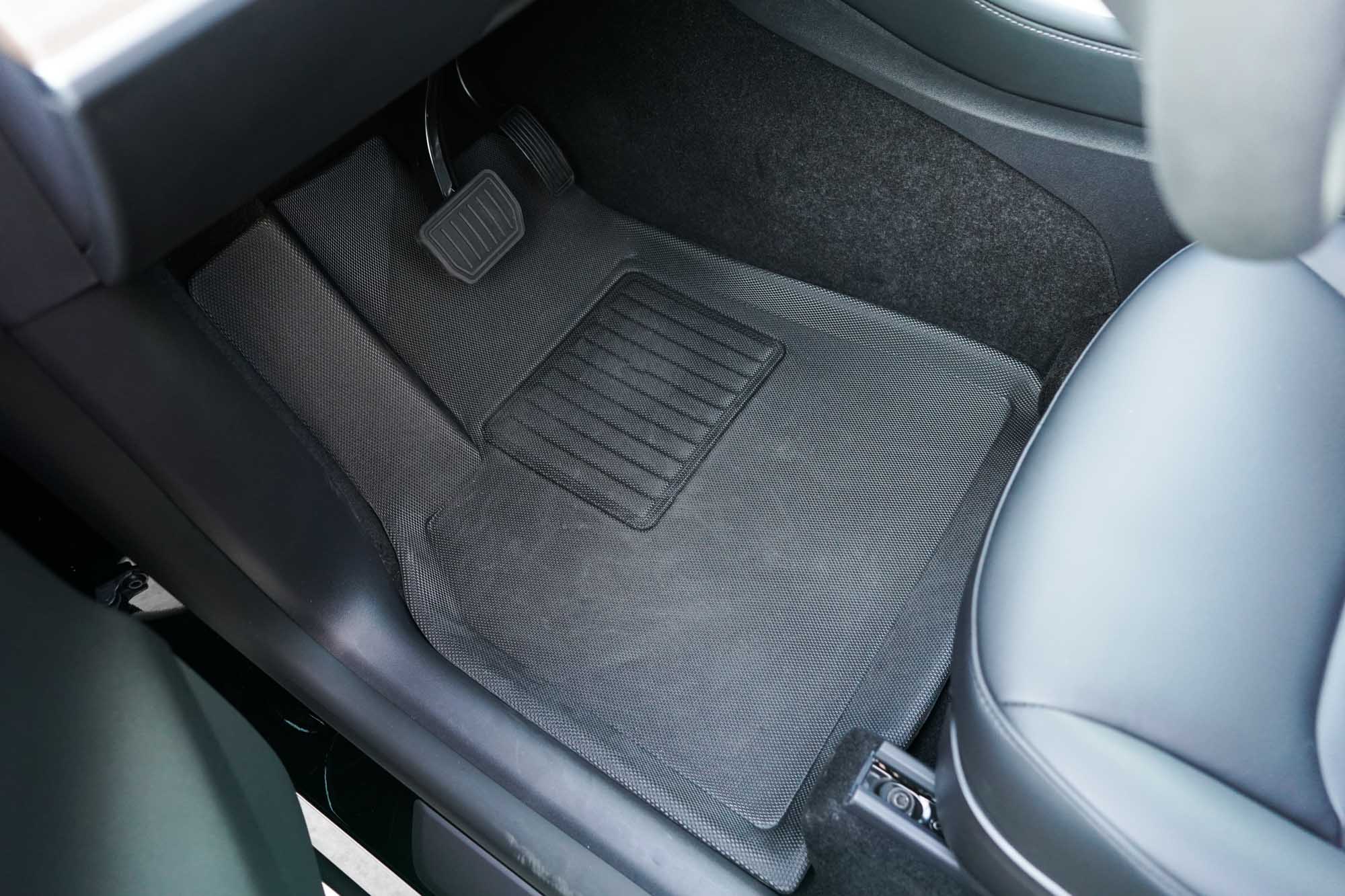
Sleep time
Camp mode

Contrast it with the more basic Climate mode you can toggle from your car which is meant only to cool the cabin down and maintain a temperature, camp mode adds more functionality. Released in December 2019 via a software update, “Camp Mode” is one of the temperature settings you can toggle on the fan/AC screen. Camp Mode lets you keep the fan on, set whatever temperature you like, maintain lights, play music, and charge devices.
We tried this out for two nights with manual settings the first night at 72F, and accidentally discovering you can leave “auto” mode as well at 72F but prefer the manual mode with a slower fan around 2 or 3. Temperatures were pretty pretty mild, dipping into the 60s at night, and not really heating up until 8-9am to the high 70s, but having a stable 72F inside was very cozy, needing only a light blanket to stay comfy.
Sleeping comfort
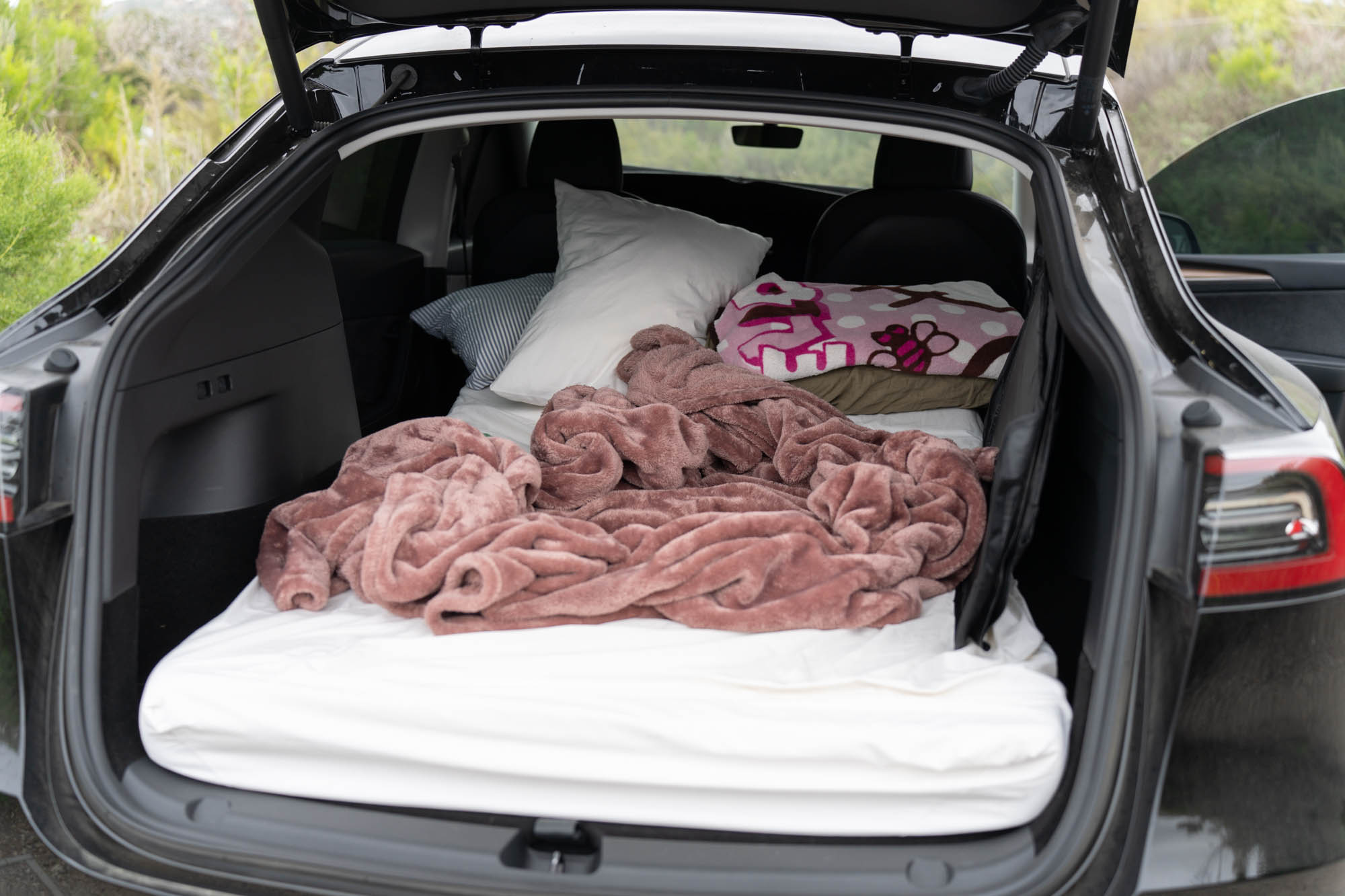
The mattress was wide and long enough to fit two people (5′ 11″ height) and there’s enough roof space to not feel claustrophobic. There is a slight issue around the head are of the mattress since the mattress hangs over the folded seats, and there’s no support there. So our heads end up flexing the mattress downward a bit. Ideally we add a hard platform or plywood underneath for better support. Ideally I’d prefer a few more inches of legroom to not need to bend my knees for comfort as often, but it beats sleeping in a tent by far.

Bathroom breaks
One concern we had was dealing with bathroom breaks in the middle of the night. At home we occasionally will go once at some point, so we were concerned about how this would play out in terms of comfort and noise. We were parked pretty close to another car so we’d need to be pretty careful opening the door to step down from a pretty high distance from the foam mat to the car or the floor. The way the doors are designed, you can hold the latch on the outside and press the door in, so you don’t wake your partner with slamming to door, but the problem is once you’re back in the car you have no choice but to slam the door shut.
Similarly the trunk opening and closing latch and motor are pretty loud with the extra concern about watching your partner’s feet so they don’t get slammed. Given this foot slamming risk, the side door was a safer option, but we needed to remove the privacy shade before leaving the car (since the window moves down when opening the door), and putting it back on after returning. Given its polyester-like material it is loud topped with a door-slamming cherry on top. Bathroom breaks are definitely doable, but a bit different than with a zipping tent door.
Final thoughts
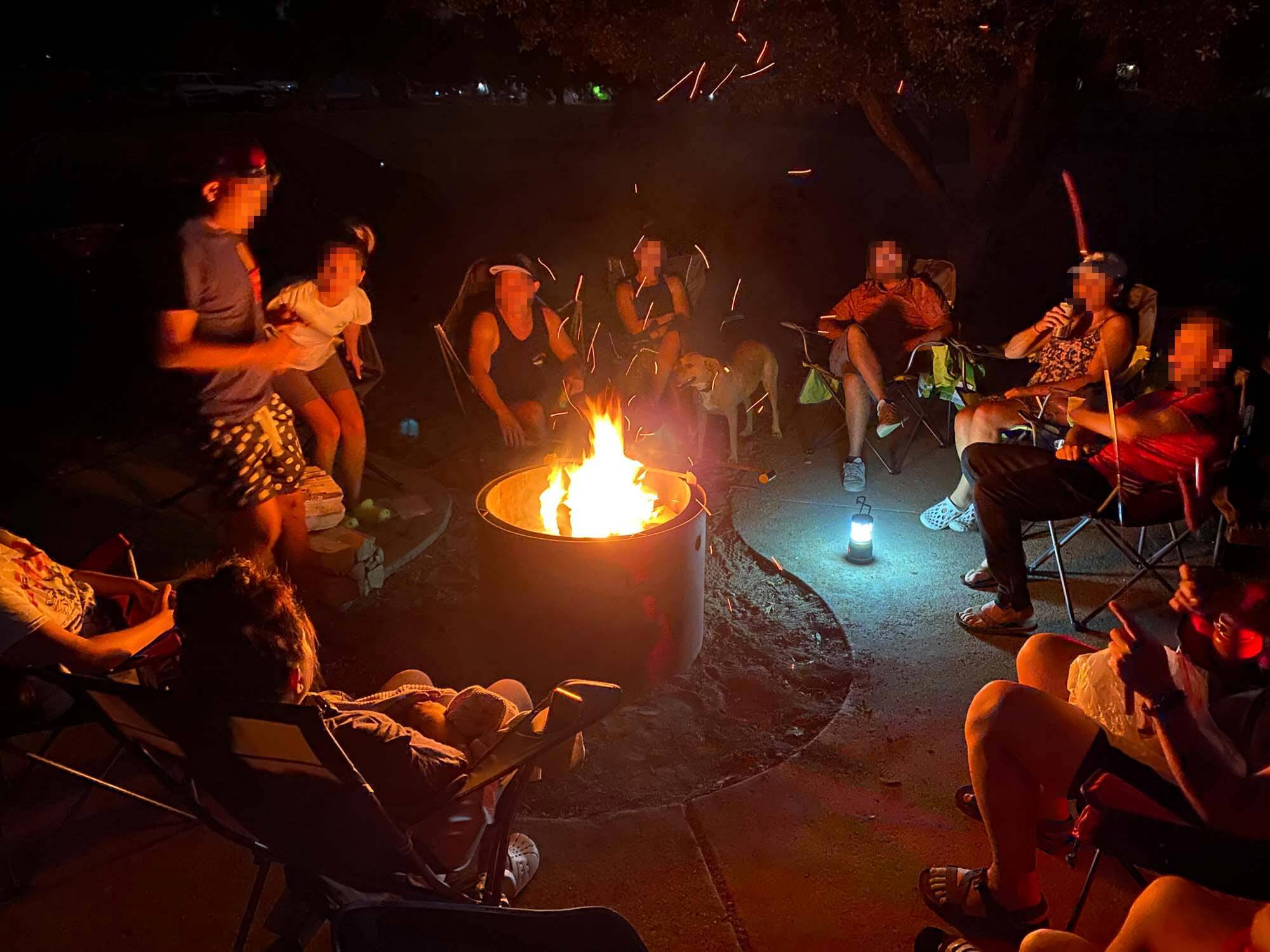
Sleeping on a mattress, with cabin temperature control is a nice upgrade from tent camping, and it’s not something you can really do in a normal internal combustion engine car without running the engine all night. There are many upgrades from blow-up mattress pads to a thick foam mattress, better sound insulation, full light blocking if you choose, and of course not having to set up a tent. If your campsite is close enough to home, or if there’s a charging station close enough to the campsite or even an electrical outlet at the campsite, camping in a Tesla is better in many ways, with a few tradeoffs that are to me, worth it.





